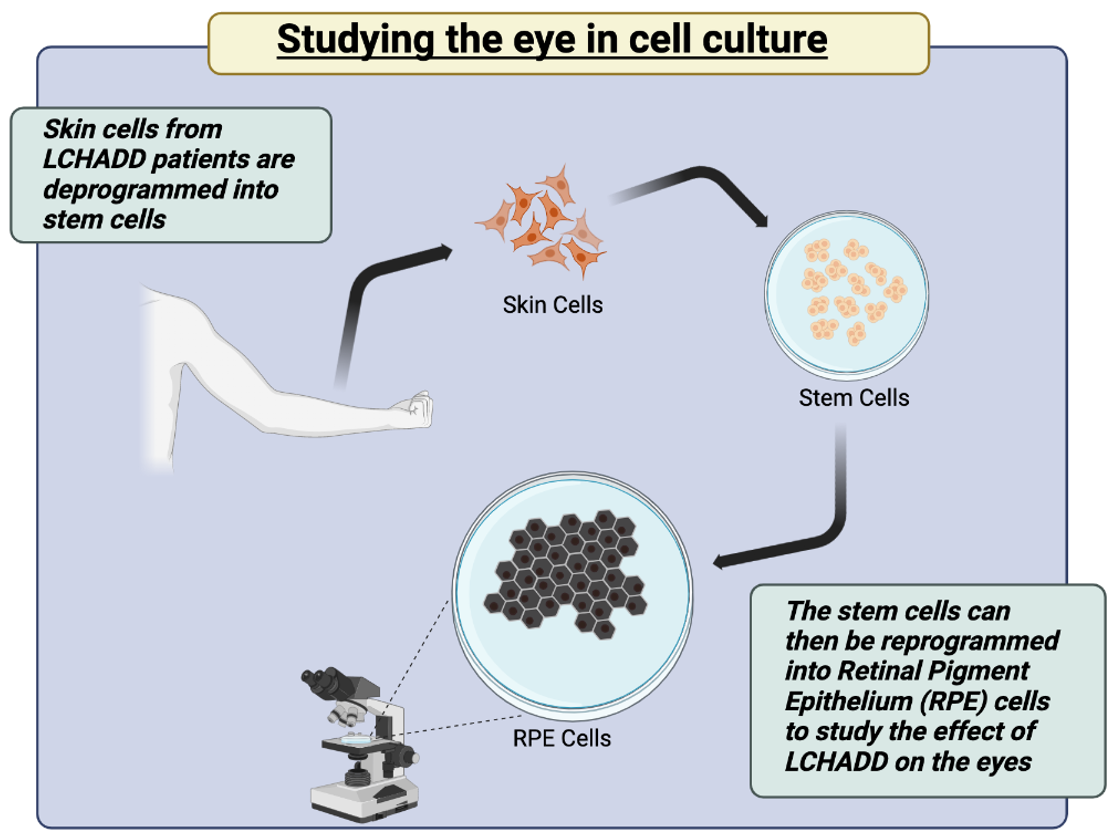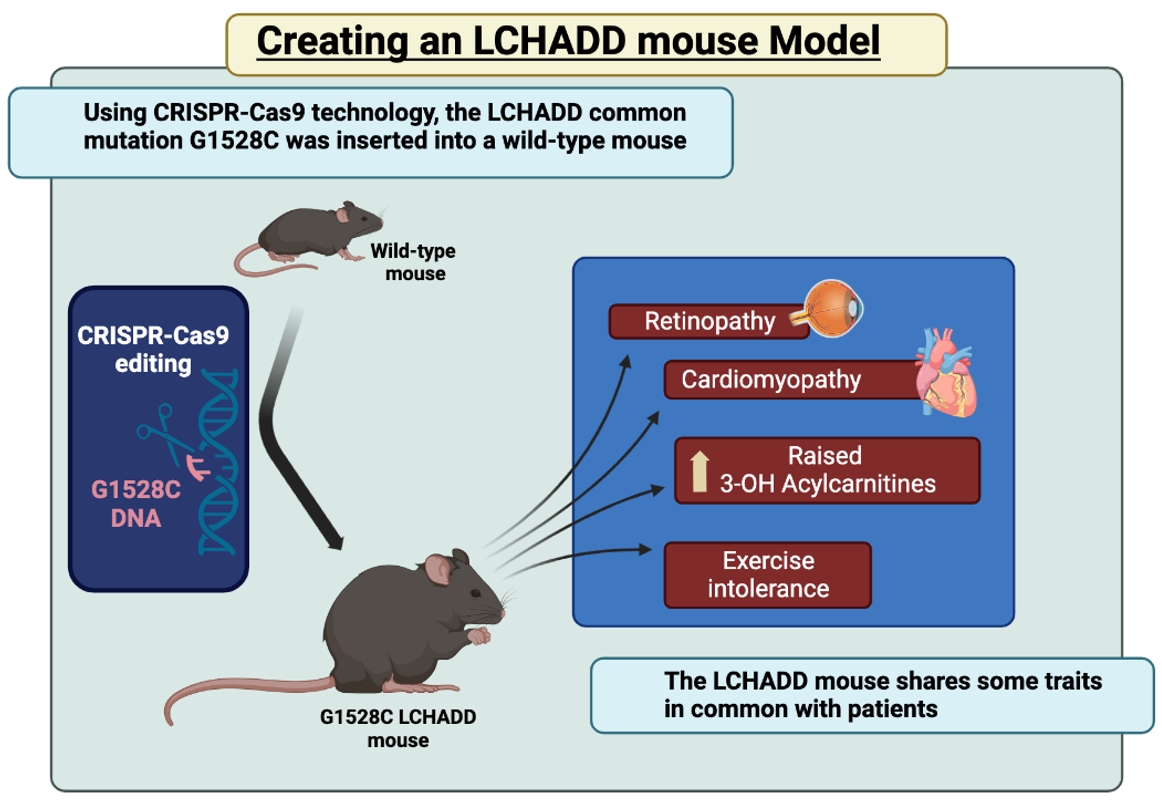Research Interests
In addition to our clinical research, the Gillingham lab studies the basic science of fatty acid oxidation disorders (FAODs) using cell culture and mouse models. We study the effects of FAODs on different tissues, the underlying mechanisms of the disorders, and possible treatments like gene therapy. The two model systems allow us to zoom in to probe FAODs closely at the cellular level or zoom out to investigate the effects at the whole-animal level.
Some of our research can be found on our Publications and Presentations page.
Cell Culture Model
In our cell culture model, we are focused on the retinopathy commonly seen in LCHADD patients. Patient skin-cells are deprogrammed into stem cells. These stem cells can then be reprogrammed into a variety of cell types. We reprogram them into a layer of dark, hexagonal cells in the retina called the retinal pigment epithelium or RPE. This layer processes fat in the eyes and may be the first affected cells of LCHADD retinopathy. We are studying how the disease affects these cells so that we may find ways to rescue them with the goal of curing LCHADD retinopathy.

Mouse Models
Using CRISPR-Cas9 technology, we have recently created a new mouse model of LCHADD based on the most common mutation seen in humans, G1528C. The LCHADD mouse will allow us to better study the effects of FAODs on an entire organism and the various tissues within it at the same time. We are still characterizing the model, but we have seen evidence of cardiomyopathy and retinopathy similar to humans. The LCHADD mouse will also be a great resource to test the overall effects of potential treatments and cures including gene therapy.
